Curtis Lemay
Posts: 12969
Joined: 9/17/2004
From: Houston, TX
Status: offline

|
I’ll now try to encapsulate TOAW IV’s new features, without going into too much detail.
I. There are a number of new naval warfare features. If you’ve seen my AARs on my Jutland 1916, Denmark Straits 1941, Pearl Harbor 1941, and Midway 1942 scenarios, you’ll have seen some hints about some of this.
• The modeling of ships has been improved. Instead of treating ships as a single piece of equipment, like a gun or a squad, they are now treated as complex systems that incur damage in combat. Only upon incurring 100 damage points will a ship be destroyed. Damage levels less than 100 affect a number of the ship’s strengths. Ships have new armor, durability, accuracy, speed, and agility parameters. These are either derived from strength and flag values, or explicitly set by the designer in a new naval equipment file. There is limited ability to repair damage at sea and significantly more in port.
• Embarked units no longer employ their own strengths in defense. Now those are fixed appropriate for a naval transport. Damage inflicted on embarked units destroys that weight of embarked equipment.
• Naval combat now evaluates attackers’ Anti-Naval strengths as individual shots/planes – employing their shell weights to determine armor penetration and resulting damage. This includes the chances of critical hits. Damage incurred is shown in the Combat Report and Unit Report.
• Sea Interdiction can now be employed by aircraft, ships, and coastal guns. There is a new Sea Interdiction mission for air units to do so. Ship and coastal guns do so automatically. Ships subjected to sea interdiction fire counterbattery back (or, in the case of carriers, counterstrikes).
• Group movement of naval units causes them to defend together if interdicted – forming an “ad hoc” task force.
• Ships and embarked units are subject to Sea Spotting, in addition to normal recon methods. There is surface spotting done by naval units at sea and land units on coastal hexes. And there is air spotting by air units set to Sea Interdiction or Air Superiority. Most such spotting is dynamic – like a land unit entering a peak hex. Presence of radar is modeled via the All Weather flag.
• Ships skirting the coastline no longer reveal land units along the coast.
• Naval targeting is modeled so that ships in a target hex are prioritized for attack by value.
• There is a Port Attack option to allow ships in port to be focused on.
II. Supply has received a few enhancements.
• There is now an intermediate supply state that falls between “Supplied” and “Unsupplied”. It’s called “Overextended”. If you’ve seen my AARs on my Soviet Union 1941 Motorized Variant or Soviet Union 1941 Early Variant you will have seen some hints about this. Basically, the designer can set a new game parameter called the Overextended Supply Threshold. That is the location supply value below which locations are overextended. Units in such hexes will function somewhat between how supplied and unsupplied units function. The result will be that it will be much more difficult for units to press on at red-lined unit conditions from such locations.
• Motorized unit movement over improved roads can be set by the designer to be less than one MP per improved road hex (for example, ½ MP per hex). If optioned, this affects supply in that supply lines traced over improved roads will extend proportionately further than over other terrain, like regular roads. Note how this would especially affect desert scenarios.
• The limit of 50% unit supply recovery per turn has been lifted.
III. There is a new Battlefield Time Stamp feature intended to address the hated “turn burn” issue. To recap, up to TOAW IV, after all combats were resolved the player-turn advanced to the combat round of the longest lasting combat. So a single long-lasting combat could burn up most or all of the player-turn. This was especially a problem for the larger scenarios because the more combats a phase resolved, the more likely one of them would suffer from being very long lasting. Beginners, especially, soured on this factor of the game. The new feature changes this as follow:
• Now, the player-turn advances to the median length combat round (instead of the longest).
• That will generally mean that about half the combats lasted longer than the round of the next phase. This is accounted for by placing a Battlefield Time Stamp (BTS) in those hexes. Each BTS has a value equal to its ending combat round.
• BTS are also created by overrunning units. In those cases their value is equal to the time stamp of the overrunning unit upon capturing the RBC hex. This fixes the time-machine effect of overruns.
• BTSs affect the cost to enter the BTS hex and the start of combats into the hex.
• BTSs are shown on the map by a dedicated graphic.
• BTSs expire and are removed when the player-turn’s combat round reaches their value.
• The BTS feature may also be used to resolve the issue with late units that block defenders’ retreat paths (This is still under development).
IV. Other game features.
• Range Limits: Ranged units can have their nominal ranges player limited. This can be used to tailor bomber ranges to match fighter cover ranges or to make units with multiple range equipment operate within the range of the shortest-ranged equipment. The DBR will reflect the modified range.
• Deployment Recovery: Ranged units retain their deployment states after combat and ground assaulters can recover theirs if a planned combat is canceled.
• New Bridge Destruction Rules: There is an option to limit bridge hexes (for destruction purposes) to locations where the road feature graphically crosses the river feature.
• Combat Report Review. Combat reports are saved in the pbl/sal files for review by both players during their player turns.
• The Combat Report now makes it clear how each combat consumed rounds. It is better organized so that players can tell more easily which units participated and how long. There will be optional combat graphics to show participating units and their equipment as they are employed. And, if the player-turn ends after the combat phase there is a report that details why it ended.
• The designer will be able to preset Advanced Rules Options for his scenarios. The player will still be allowed to override his recommendations.
• Adoption of Matrix’s PBEM++ system.
V. New Editor features.
• Various scenario parameter limits were increased:
Event slots increased from 999 to 10,000
Units per side increased from 2,000 to 10,000
Formations per side increased from 400 to 1,000
Map Boundaries increased from 300x300 to 700x700
Number of placenames increased from 800 to 4,000
Supply points per side increased from 99 to 399
Objectives per track increased from 39 to 99
Distant location limit increased from 199 to 254
Supply Radius limit increased from 25 to 100
Equipment list limit increased from 2018 to 5000
Theater Option limit increased from 16 to 64
Event radii increased from 20 to 99
Helicopters work with dates earlier than 1955
• A unit can have an alternate icon. Primary and alternate icons combine their abilities.
• Scenario modified equipment files (including the new naval equipment file) are now saved with the scenario and save files. So, no more mismatching equipment files by players.
VI. Interface Enhancements. A lot of these are still under development and what they will ultimately be is still sort of a moving target. But here are a few of the highlights either done or in progress:
• Dialogs now scale relative to font size. This allows users with huge screens to tailor the game to screen size.
• Dialogs now have scroll bars when appropriate.
• Some dialogs have sorting ability.
• There will be additional map zoom levels between the current ones.
• Control panel features will be hide-able – showing more of the map.
• Unit Panel can toggle to the Group Composition view.
• Enhanced PO Assist features to make it easier to use.
• Additional display options for the unit icon values other than the current AP and DF.
• Fonts settable within the game rather than the .ini file.
• More info on the Situation Report.
Other features may be added beyond these. It’s still a work in progress.
VII. New Map and Interface artwork. The graphics designer is Marc von Martial, a long-time Matrix veteran. He’s just getting started, but his sales pitch was very impressive. I’ll pass on showing any of those shots because first impressions are very important and, while those shots looked very good to me, they won’t be as good as his final versions.
< Message edited by Tamas -- 4/12/2017 9:09:48 AM >
_____________________________
|
 Printable Version
Printable Version






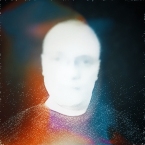

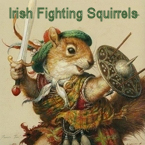





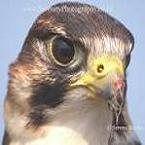

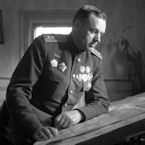
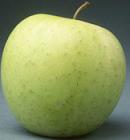
 New Messages
New Messages No New Messages
No New Messages Hot Topic w/ New Messages
Hot Topic w/ New Messages Hot Topic w/o New Messages
Hot Topic w/o New Messages Locked w/ New Messages
Locked w/ New Messages Locked w/o New Messages
Locked w/o New Messages Post New Thread
Post New Thread